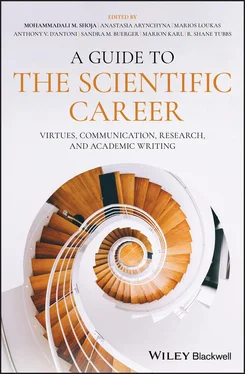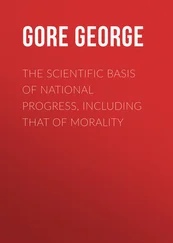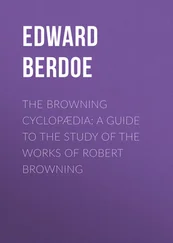2 Procrastination. Wasting time delays the process of reaching your definition of success. Time is of the essence and a sense of urgency eliminates the tendency to put off what can be completed now. Don't let a day go by without working toward your goals.
3 Heavy multitasking. Being able to multitask is a wonderful skill; however, taking on too much can be disastrous. It places more in your way than you can reasonably handle, making it more difficult to feel accomplished and satisfied. Be efficient with your time and choose your tasks wisely.
4 Arrogance. Confidence in yourself is good. Arrogance, however, is the kind of excessive confidence that obfuscates how well (or poorly) you are doing and engenders lack of cooperation by peers and friends. Nothing is a quicker turnoff to potential investors and partners than acting as though you are the center of the universe.
5 Clutter. Disorganization of mind and goals is one of the worst things you can do to yourself relative to success. A cluttered understanding of your goals or actions creates difficulties in measuring your definition of success. Ditch the clutter and get organized.
6 Lack of focus. This is particularly common, as focus is driven by motivation. If you don't know what you are working toward, it is difficult to know where to focus. Creating short‐term and long‐term goals allows you to decide where to focus your attention.
7 Self‐doubt. Confidence is important, and self‐doubt is the antithesis of confidence in your abilities and goals. Cast out doubt and embrace action.
8 Envy. Envy is operationally characterized by jealousy combined with action to hurt. Envy is the enemy of success because it ignores your definition of success. What you need to focus on is what you want from life, not what others are achieving.
9 Nonconstructive criticism. There is nothing wrong with criticism if its aim is to improve something. However, criticism intended only to be critical serves no one except the critic. Beware people who only tell you the problems they see without any constructive advice.
10 Myths and the wrong mindset. Magical thinking is a propensity to imagine mystical, mythical, or unknown forces to explain behaviors and outcomes. This kind of mindset sets you up to blind you to what you ought to do and to what you are doing wrong. Exchange magical thinking for discipline and goal orientation, and you will be back on the path of success in no time.
11 Urge to please others. Being empathetic and having high emotional intelligence is a good thing. However, aiming to please others instead of reaching goals sets you up for failure. Lead by example, set goals, and persevere. Leave people pleasing to those who lack goals.
1 Wilson LO (2017) Levels of creativity. [WWW] The Second Principle, The work of Leslie Owen Wilson. Available from: http://thesecondprinciple.com/creativity/creativetraits/levels-of-creativity(Accessed 14 December 2017).
2 Qualities of Research Scientists: Personality and Leadership Attributes of Research Team Members
Fred Bertino 1, and Mohammadali M. Shoja 2
1Department of Radiology and Imaging Sciences, Emory University School of Medicine, Atlanta, GA, USA
2Division of General Surgery, University of Illinois at Chicago Metropolitan Group Hospitals, Chicago, IL, USA
Several leadership types have been described that may be applied to any field of study. The leadership style of a researcher is a component of the personality that often dictates how interpersonal relations between team members result in an effective and productive work. Trait theory suggests that leadership qualities are inborn and usually result in a leader who is charismatic, friendly, motivational, and intelligent (Sims 2009). By contrast, behavior theory of leadership includes four specific types of leaders: autocratic, bureaucratic, participative, and free rein (Sims 2009; Hanna 1999).
Autocratic leaders tend to be inflexible and unwilling to accept input from others. Though rigid, they tend to be confident, knowledgeable, and have significant control over the group and project workflow. Bureaucratic leaders hold rules and regulations in high esteem and use guidelines as primary support for project development. Similarly rigid, bureaucratic leaders hold strict adherence to formal instructions to complete tasks. Participative leaders are more open to group suggestion when it comes to problem solving and decision‐making. Though inclusive, the efficiency of the group may be lessened when compared to authoritative and bureaucratic leaders from a high volume of external input. Participative leaders are willing to make definitive decisions to optimize workflow. Free rein leaders allow group members to exercise individuality and work to their strengths independently in their own styles. However, effective free rein leaders must have an understanding of an individual group member's abilities and how to maximize competency during research projects. Self‐motivation on the part of each research team member is crucial for a leadership style of this type (Sims 2009; Hanna 1999).
In addition to behavioral leadership theory, other forms of leadership doctrines exist that emphasize interpersonal relationships. Emphasis of empathy (relationship‐oriented leaders), team spirit (coaching leaders), and friendship (affiliative leaders) are several varieties of this interpersonal subset. Alternatively, creativity‐based organizational leadership styles are able to encourage visionary and inspirational ideas (transformational) or describe directions based on each person's personality for a system of rewards and punishments for adequate or inadequate work respectively (transactional) (Sims 2009).
Effective leaders in research adopt elements from each leadership style and use many methods to enhance the group experience. No leadership style is mutually exclusive, and a leader with the ability to combine several aspects of many styles is able to engage a larger audience. The goal of the researcher is to produce high‐quality, beneficial work in an efficient manner while maintaining the enthusiasm to encourage others to pursue similar goals. As a leader, targeting one's managerial style to the strengths and weaknesses of the research team is bound to boost morale while maintaining a workplace conducive to quality research. Understanding the specific strengths and weaknesses of the team can be best performed by understanding a team member's personality.
2.2 Personality and Interpersonal Relationships
As mentioned previously, leadership style is often a reflection of the personality traits of the leader. A good understanding of the varieties of personalities of the research team is crucial to developing a keen working atmosphere, but perhaps more imperatively, a thorough understanding of one's own personality can help identify strengths and weaknesses in learning, leadership, and communicative ability. Carl Jung and later, Isabel Briggs Myers and Katherine Briggs contributed significantly to the psychological study of personality typology, their research still applied in the workplace to study interactions among co‐workers, and even a medical student's affinity to certain subspecialties (Freeman 2004; Stilwell et al. 2000; Myers 1962; Myers and Davis 1965). Developed in the 1950s, the Myers‐Briggs Typology Indicator (MBTI), though under some criticism for its reproducibility and validity, can offer a general assessment of personality for an individual if the assessment is taken honestly, and without too much thought into any one question (Freeman 2004; Pittenger 2005). Honest answers from the unique experiences of problem solving, learning style, and communicative ability of the examinee usually result in a genuine assessment congruent to the examinee's temperament. The tool itself can serve as an introductory method to introduce individual differences between group members, which may be beneficial in the beginnings of a group research project, but not meant to be taken too seriously into account (Freeman 2004; Pittenger 2005). There are a variety of exams available online at no charge, yet official ones may be purchased online as well.
Читать дальше












